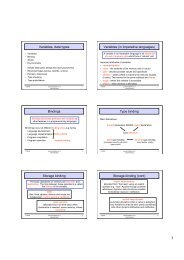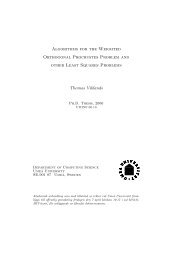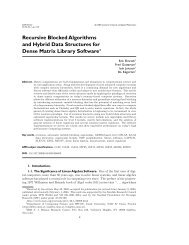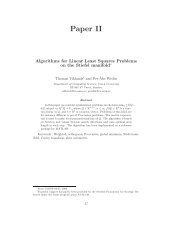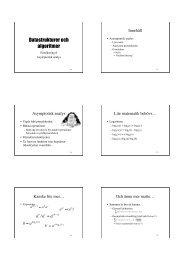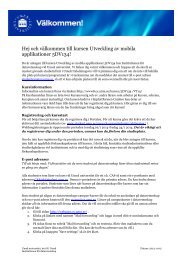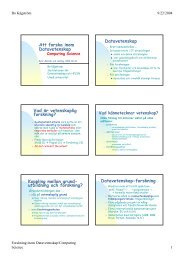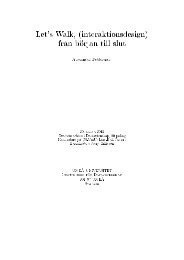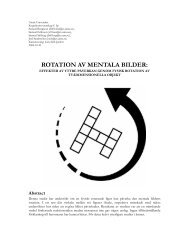Designing a persistent online strategy game - Department of ...
Designing a persistent online strategy game - Department of ...
Designing a persistent online strategy game - Department of ...
You also want an ePaper? Increase the reach of your titles
YUMPU automatically turns print PDFs into web optimized ePapers that Google loves.
38 Chapter 4. Models & methods for evaluating <strong>game</strong>s<br />
4.8 Methods for the evaluation <strong>of</strong> video <strong>game</strong>s<br />
Games can be evaluated in the same way as other types <strong>of</strong> interactive s<strong>of</strong>tware. The interface<br />
<strong>of</strong> a <strong>game</strong> can for example be evaluated by using traditional usability techniques.<br />
To account for the differences between <strong>game</strong>s and other types <strong>of</strong> s<strong>of</strong>tware new methods<br />
has also been created. Some techniques for evaluating <strong>game</strong>s are explained below.<br />
The methods described do not cover all types and aspects <strong>of</strong> <strong>game</strong>s. In <strong>game</strong>s where the<br />
social aspect is important (music, party, quiz) it is important to consider that and test<br />
the <strong>game</strong> with a group <strong>of</strong> people instead <strong>of</strong> one and one. Other <strong>game</strong>s like MMORPG’S<br />
are played during a substantial period <strong>of</strong> time and it could therefore be hard to balance<br />
the difficulty and pace <strong>of</strong> progress in such a <strong>game</strong>. Many companies therefore release<br />
open betas for the public to play before the actual release <strong>of</strong> the <strong>game</strong>. In this way they<br />
can see the long term effects and then balance the <strong>game</strong>.<br />
4.8.1 Usability testing<br />
Usability testing is performed in a lab or similar controlled environment. The goal is to<br />
get objective data about users’ performance and no distractions are allowed. Usability<br />
testing can answer questions such as time to complete a task, number <strong>of</strong> errors when<br />
performing a task and number <strong>of</strong> users that succeeded in completing a task [52].<br />
Before testing is performed a set <strong>of</strong> tasks that the participants should perform are<br />
constructed. The tasks should be designed so that they generate valid data about the<br />
Table 4.2: Dimensions <strong>of</strong> <strong>game</strong> experience. Adapted from Poels et al. [51].<br />
Dimension In-<strong>game</strong> experiences Post-<strong>game</strong> experiences<br />
Enjoyment Fun, amusement, pleasure, Energised, satisfaction, relaxation<br />
relaxation<br />
Flow Concentration, absorption, Jetlag, lost track <strong>of</strong> time,<br />
detachment<br />
alienation<br />
Imaginative immersiothy,<br />
Absorbed in the story, empa-<br />
Returning to the real world<br />
identification<br />
Sensory immersion Presence Returning to the real world<br />
Suspence<br />
Challenge, tension, pressure,<br />
hope, anxiety, thrill<br />
Release, relief, exhausted, euphoria<br />
Competence Pride, euphoria, accomplishment<br />
Pride, euphoria, accomplishment,<br />
satisfaction<br />
Negative affect Frustration, disappointment, Regret, guilt, disappointment,<br />
irritation, anger<br />
anger, revenge<br />
Control Autonomy, power, freedom Power, status<br />
Social presence Enjoyment with others, being<br />
connected with others, empathy,<br />
cooperation<br />
Accomplishment in a team,<br />
bonding



